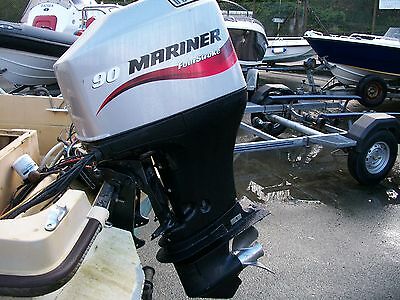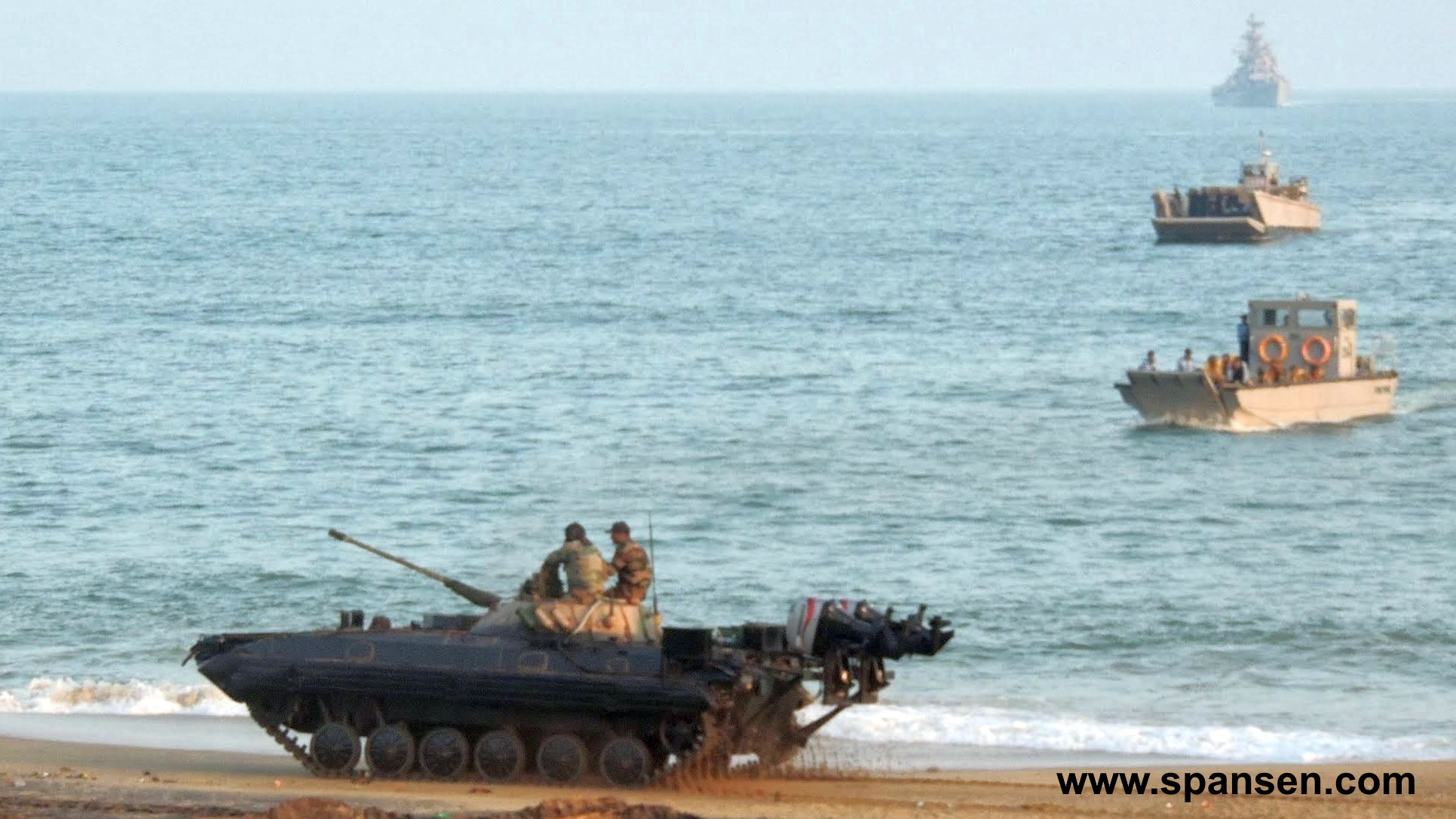Having 3000-odd examples of a system & some surplus under-utilised engines in inventory allows one to tinker with it that result in such curious, one-of-a-kind sight.
The Indian Army has been eyeing multiple upgrade programmes to forestall the looming obsolescence of it's massive Infantry Combat Vehicle [ICV] fleet, based on the Soviet-era BMP-2. Amongst the deliverables, is a more powerful primary power plant, along with an Auxilliry Power Unit [APU]. You can read more about the upgrade wish-list in this earlier write-up. Currently, a supercharged 4-Stroke, Water-cooled UTD-20 Engine, churning out 300 HP at 2600 rpm, propels them. The BMP-series vehicles are unique in their ability to wade through waters to land on land. In Military parlance, they are capable of amphibious operations.
During one such Amphibious Exercise, they tested it with a retrofitted pair of Outboard Motors mounted on it's hind quarters. Details surrounding this trial are sparse. It was carried out by a detachment from the Army Northern Commmand's [NC] 813 Combat Engineering Training Camp [813 CETC], based in Akhnoor. The Unit's primary role involves supporting Engineering Regiments during Humanitarian Assistance & Disaster Relief [HADR], training & Counter-Insurgency [CI] missions. This specially configured BMP-2 was fitted with 2 Nos. of 4-stroke Mariner-make engines, together outputting 180 HP. Given CETC's involvement, there is a high likelihood that it is in-house Army effort driven, in no small parts, by a need to find effective use of these Motors, that it received back in 2010. A subsequent GoI Audit found low utilisation of these, procured through the Commander's discretionary funds.
Motors in this position could pose certain operational challenges. For example, this is also the ingress & egress point of the transported personnel. To address this, the propellers appear to have a hydraulically-actuated swivel mechanism, that would turn the blades away from the soldier's path when needed. An exposed, top-mounted Engine also does not bode well for combat situations.
As noted earlier, the BMP-II uses it's UTD-20 engine for powering all operations. With ruggedness & performance reliability being a higher priority in design considerations, fuel economy took a hit in the final outcome. Militaries, the world over, therefore, transport their Armoured Vehicles in road-complaint Flat-bed Trailer, unloading them at the periphery of the theatre of engagement, from where they commence independent operations. Even inside, they seek to conserve fuel by economising use of the main engine. The use of smaller outboard motors, specific to use only in Amphibious missions, could be a similar exercise in fuel rationalisation & better fording.
The coarse implementation of the mounting arrangement further strengthens the trial nature. It remains to be seen if a BMP-2 eventually upgraded with an uprated Main Engine, along with an APU, will also sport Outboard Motors. The Indian BMP-2, in current configuration, is already believed to have reached the upper limits of it's floatation weight. Perhaps, design consideration could involve dual-use of Outboard Motors as the APU, when required. The BMP 2, presently, carries with it Lead-Acid Batteries to provide power for functions like operating the Sights, Communication Equipment & Gun Traverse, when it's crew shuts off the Main Engine, primarily to achieve stealth. However, the rapid loss of battery power makes a demand for APU. Troops access would need to be given greater thought, including making the attachment more ruggedized, if designers go down this road.
The BMP-2's vulnerability to anti-armour action was laid bare in the 90s during Russia's invasion of Chechnya, where defending hunter-killer teams neutralised them with RPG-7 & RPG-18 fires. This rushed Russian designers back to the drawing board who, then, came up with the BTR-T ICV. Based on the heavy T-55 Tank, it tipped the scale at 35 MT, compared to the 16 MT, the BMP-2's weight.
The Army's search for a replacement to these Soviet-vintage extends back decades. Multiple entities, both private & public, have pitched their solution, as part of the Futuristic Infantry Combat Vehicle [FICV] programme. However, all indications suggests that this one is not likely to see the end of the road any time soon. Till then, we would continue seeing the Army's attempt to wallop a geriatric mule, to get it to gallop.
Godspeed
Also Read: India's Carrier Programme - From A Modified Civilian Vessel To A 40,000 Tonne Behemoth





